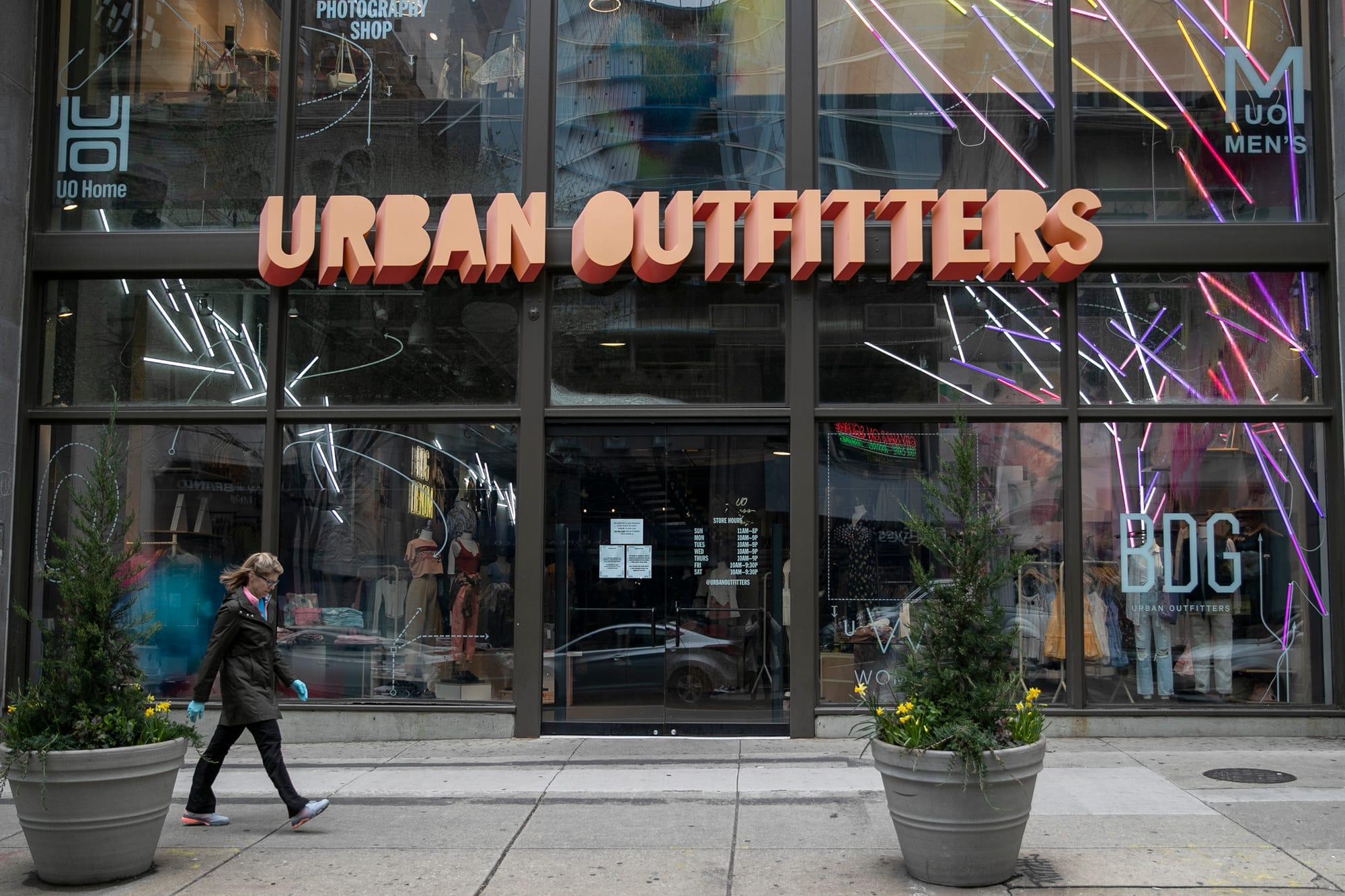The Origin of Urban Outfitters Home: From Philly Roots to a Global Home Style
Urban Outfitters began in 1970 as a small shop in Philadelphia and grew into a global brand. It expanded through innovative lifestyle products, including home goods, and went public as URBN in 1993. Today, it remains rooted in creativity and cultural relevance.

If you’ve ever wandered into an Urban Outfitters store, you’ve likely noticed its eclectic mix of vintage-inspired clothing, quirky home goods, and the undeniable atmosphere that blends the old with the new. But how did this brand, which began as a small storefront in Philadelphia, grow into the global entity it is today? The story of Urban Outfitters is one of seizing opportunities, understanding cultural shifts, and continuously adapting to a changing market.

Humble Beginnings: The Early Days in Philadelphia
Urban Outfitters began in 1970, not as a global brand, but as a small shop in West Philadelphia. Richard Hayne, along with his then-wife Judy Wicks and their friend Scott Belair, opened the store near the University of Pennsylvania campus. It was called the Free People’s Store, a name reflecting the countercultural spirit of the time. The shop catered to the needs of college students and young people who were searching for something different—something that stood apart from the mainstream offerings of the day.
The store was a success, quickly becoming a go-to spot for those in search of offbeat clothing, vinyl records, and unique home decor. As the store’s popularity grew, Hayne decided to rebrand it as Urban Outfitters in 1976, a name that better captured the urban, youth-oriented market the store was serving. This rebranding marked the beginning of Urban Outfitters' expansion beyond Philadelphia.
Expansion and Diversification: Building a Lifestyle Brand
As Urban Outfitters expanded, it became clear that its customers were interested in more than just clothing. The brand began to offer a wide range of lifestyle products—items that complemented its fashion lines and resonated with the same sense of individuality and rebellion. From vinyl records to books, home decor, and small furniture pieces, Urban Outfitters became known for selling more than just items—it sold a lifestyle.
This expansion wasn’t just a business decision; it was a natural extension of the brand’s identity. Urban Outfitters understood that its customers wanted to express themselves not just through what they wore but through how they lived. This understanding led to the creation of Urban Outfitters Home, a line of products that allowed customers to extend their personal style into their living spaces.

Anthropologie and the Rise of Home Goods
In 1992, Urban Outfitters’ founder Richard Hayne recognized another opportunity. He noticed a gap in the market for women in their 30s and 40s who were looking for unique, stylish products that reflected their more mature tastes. This insight led to the creation of Anthropologie, a brand that would soon grow into a significant part of the Urban Outfitters Inc. (URBN) family.
Anthropologie didn’t just focus on fashion; it offered a full suite of home goods, ranging from furniture to decor. The brand’s success in this space helped URBN further solidify its presence in the home goods market. Anthropologie’s offerings, known for their eclectic, bohemian-inspired designs, attracted customers who wanted to create living spaces as unique as their wardrobes. This expansion into home goods became a defining feature of the URBN brand portfolio.

Urban Outfitters Home: Bringing Style into the Living Space
Recognizing the demand for home goods that matched the eclectic style of its clothing, Urban Outfitters launched Urban Outfitters Home. This line offered a range of products that allowed customers to transform their living spaces into reflections of their unique personalities.
Bedding and Textiles: More Than Just Comfort
Urban Outfitters Home’s bedding and textiles quickly became a hit. These products offered more than just comfort; they were designed to make a statement. With bold patterns, unique textures, and a mix of styles ranging from bohemian to modern, Urban Outfitters Home allowed customers to create personalized sanctuaries in their bedrooms.
Furniture: Small Spaces, Big Style
The furniture offered by Urban Outfitters Home was designed with the same eclectic spirit that defined the brand’s clothing. The pieces were often compact, making them ideal for urban apartments or dorm rooms, but they didn’t sacrifice style. From vintage-inspired sofas to modern coffee tables, the furniture added character to any space.
Decor and Lighting: Setting the Mood
Urban Outfitters Home also excelled in decor and lighting, offering products that helped customers create a cohesive, stylish environment. The decor items, including everything from wall art to planters, added personality without overwhelming the space. The lighting options, ranging from trendy neon signs to elegant floor lamps, allowed customers to set the perfect mood in their homes.

Going Public: The Birth of URBN
By the late 1990s, the success of Urban Outfitters and the growth of Anthropologie and Free People had transformed Hayne’s small venture into a thriving business. In 1993, Urban Outfitters Inc. (URBN) went public, a move that provided the company with the capital needed to continue expanding. Going public marked a new chapter for URBN, allowing it to grow its family of brands and reach new markets. The funds raised from the initial public offering (IPO) were invested in opening new stores, enhancing product lines, and developing the company’s e-commerce capabilities.

A New Era at the Navy Yard: Urban Outfitters’ Headquarters
In 2006, Urban Outfitters made a significant move that would shape its future. The company relocated its headquarters to the historic Navy Yard in Philadelphia, a site that once produced warships but had since fallen into disrepair. The transformation of the Navy Yard into a modern, creative hub is a testament to the company’s vision and its commitment to staying rooted in Philadelphia.
The Navy Yard campus, with its renovated brick buildings and modern amenities, has become a symbol of Urban Outfitters’ evolution. It’s where the company’s 2,100 employees—many of whom bring their dogs to work—develop the products and strategies that keep the brand at the forefront of retail. The campus is not just a place to work; it’s a space that fosters creativity and collaboration.
Challenges and Controversies: Navigating a Complex Market
Urban Outfitters’ journey hasn’t been without its challenges. The company has faced criticism for some of its products, which have been perceived as offensive or insensitive. These controversies have led to moments of reflection within the company, prompting it to rethink its approach to certain designs and products.
Despite these challenges, Urban Outfitters has continued to grow and adapt. The company has recognized the importance of staying connected to its customers’ values, particularly around issues of equality and cultural sensitivity. This has become increasingly important in an era where social media can amplify both praise and criticism.
Urban Outfitters Today: A Global Brand with Local Roots
Today, Urban Outfitters is a global brand, but it remains deeply connected to its Philadelphia roots. The company’s headquarters at the Navy Yard is a reminder of its journey from a small storefront to a global lifestyle brand. Urban Outfitters continues to innovate, exploring new ways to connect with its customers and stay relevant in a rapidly changing retail landscape.
Looking Forward: What’s Next for Urban Outfitters?
As Urban Outfitters looks to the future, it remains committed to its core values of creativity, individuality, and cultural relevance. The brand’s ability to adapt to changing trends and customer preferences will be key to its continued success. Whether through its fashion lines, home products, or new ventures, Urban Outfitters will continue to be a brand that understands and reflects the evolving desires of its customers.
Check out Urban Outfitters Home on Spoken and never overpay making your home beautiful!

Geoff Abraham
Co-founder & President of Spoken
Geoff is the co-founder and President of Spoken. He is a Dad. He holds a BA from UT Austin (Plan II) and an MBA from Stanford. Geoff has built several successful businesses, including a bicycle taxi business in San Francisco which he ran for 10 years with his wife, Mimosa. He is an executive coach, and he actively invests in seed-stage startups via The Explorer Fund.
Read more